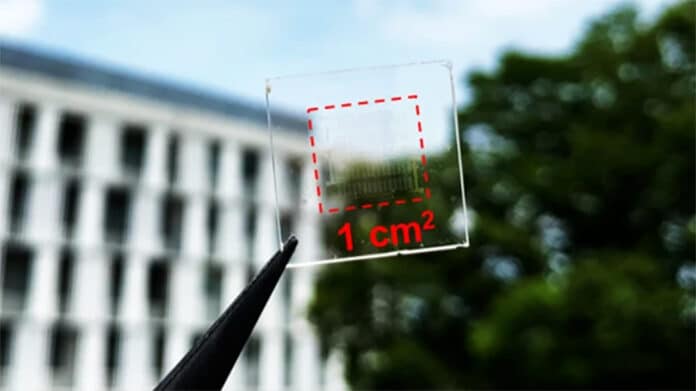Transparent solar cells have attracted considerable attention as they can overcome the limitations of traditional non-transparent solar cells, which can convert diverse components, such as architectural windows, agricultural sheds, glass panels of smart devices, and even human skin, into energy harvesting devices. This technology has now taken another step towards becoming a reality.
A team of researchers from the Tohoku University in Japan has fabricated a highly transparent solar cell with a 2D atomic sheet. These near-invisible solar cells are developed using indium tin oxide (ITO) as a transparent electrode and tungsten disulfide (WS2) as a photoactive layer.
Remarkably, these solar cells achieved average visible transparency of 79%, meaning they can, in theory, be placed everywhere – building windows, the front panel of cars, and even on human skin.
Despite the recent developments in transparent solar cells with perovskite and organic semiconductors, the average visible transparency of these solar cells is lower than 70%. It is still a challenge to create solar cells that are more transparent. Scientists have long sought to develop transparent solar cells, but suitable materials have not existed thus far.
To make a near-invisible solar cell, the Japanese research team controlled the contact barriers between indium tin oxide (ITO), one of the most widely used transparent conducting oxides, and a monolayer tungsten disulfide. They coated various thin metals onto the ITO and inserted a thin layer of Tungsten Oxide between the coated ITO and the tungsten disulfide.
As a result, the researchers found that the power conversion efficiency of the solar cell with the optimized electrode was over 1000 times that of a device using a normal ITO electrode. The research team also explored how their solar cell can be expanded for use in an actual solar panel. By repeating the experiments on this optimized unit device with an appropriate number of series and parallel connections, total power could be increased up to 420 pW from a 1cm² solar cell with a very high value (79%) of average visible transmission.
“We discovered the appropriate design modifications needed to avoid an unexpected voltage drop that accompanies increasing the device area,” said Toshiaki Kato, corresponding author of the paper and associate professor at Tohoku University’s Graduate School of Engineering.
